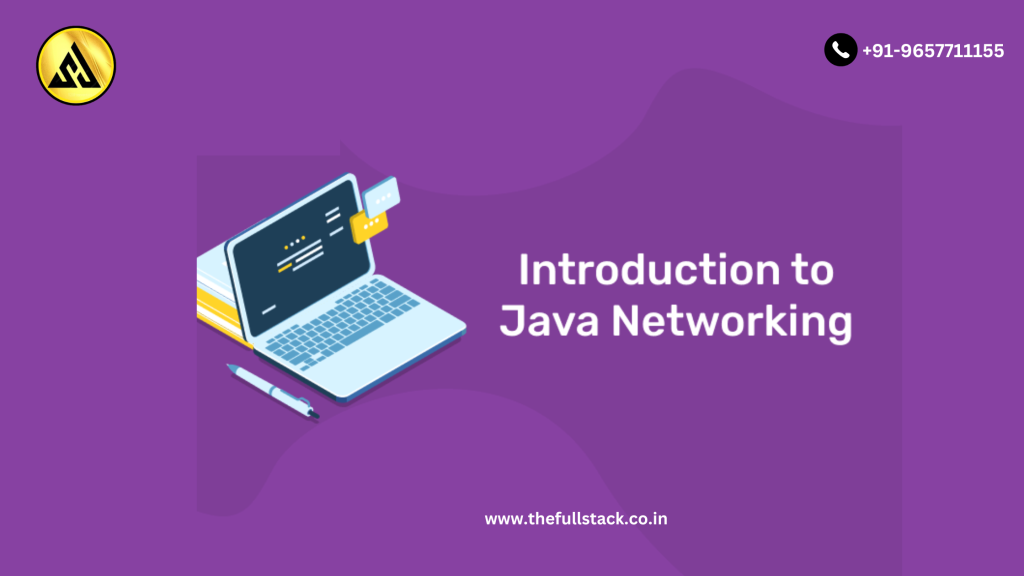Networking is the process by which computing devices, including laptops, desktops, servers, smartphones, tablets, and an ever-growing collection of Internet of Things devices, including cameras, door locks, doorbells, refrigerators, audio/visual systems, thermostats, and other sensors, exchange data and information with one another.
To put it simply, network programming or networking refers to the creation of programs that may run on a variety of computer systems, all of which are connected to one another in order to share resources over a network. We will talk about Java networking here.
- Java Networking: What is it?
- Common Network Protocols
- Network Terminology for Java
Java Networking: What is it?
Simple programs gain a great deal of strength from networking. Networks allow a single application to access data stored on millions of machines located all over the world. The most popular programming language, Java, was created from the ground up with networking in mind. Combining two or more computing units to exchange resources is known as Java networking.
The application layer handles all network connectivity for Java programs. The J2SE APIs’ java.net package includes a number of classes and interfaces that carry out the low-level communication functions, allowing the user to create programs that concentrate on finding solutions.
Common Network Protocols
As stated earlier, the java.net package of the Java programming language includes various classes and interfaces that provide an easy-to-use means to access network resources. Other than classes and interfaces, the java.net package also provides support for the two well-known network protocols. These are:
- TCP, or Transmission Control Protocol, is a protocol that enables safe communication between various applications. Since TCP is a connection-oriented protocol, data can move in both directions when a connection is made. Usually, this protocol is utilized in conjunction with the Internet Protocol. As a result, TCP is sometimes called TCP/IP. TCP is a comprehensive protocol for transferring data, including still photos, data files, and web pages, because it includes built-in mechanisms to check for errors and guarantee that the data is delivered in the order that it was sent.
- User Datagram Protocol (UDP): This connectionless protocol enables data packets to be sent between several applications. UDP is a more straightforward Internet protocol that does not require error-checking or recovery services. There is no overhead associated with establishing, sustaining, or ending a connection when using UDP. Whether the destination receives the data or not, UDP sends it to them continually.
Java Networking Terminology
In Java Networking, many terminologies are used frequently. These widely used Java Networking Terminologies are given as follows:
- IP Address: A device on the internet or a local network can be identified by its unique IP address. The acronym for “Internet Protocol” is IP. It consists of a set of guidelines controlling the format of data transmitted across a local network or the internet. The term “IP address” refers to a logical address that is changeable. Octets make up its composition. Every octet has a range between 0 and 255.
IP address range: 0.0.0.0 to 255.255.255.255
For instance, 192.168.0.1 is composed of octets. The range of each octet varies from 0 to 255.- Range of the IP Address – 0.0.0.0 to 255.255.255.255
- For Example – 192.168.0.1
- Port Number – A port number is a way to identify a specific internet connection or other network data when it gets to a server. Applications can be uniquely identified by their port number. Applications use the port number as a communication endpoint. For transmission and communication between two applications, the IP address and port number are connected. Not all of the 65,535 port numbers are used on a daily basis.
- Protocol – A network protocol is an organized set of commands that define how data is transmitted between different devices in the same network. Network protocols are the reason through which a user can easily communicate with people all over the world and thus play a critical role in modern digital communications. For Example – TCP, FTP, POP, etc.
- MAC Address – Media Access Control address is referred to as a MAC address. A NIC (Network Interface Controller/Card) is assigned this strange identification. When paired with the network adapter, it has a 48-bit or 64-bit address. A MAC address may be composed of hexadecimal characters. To put it simply, a MAC address is a special number that is used to identify and locate a device within a network.
- Socket – A socket is one endpoint of a two-way communication connection between the two applications running on the network. The socket mechanism presents a method of inter-process communication (IPC) by setting named contact points between which the communication occurs. A socket is tied to a port number so that the TCP layer can recognize the application to which the data is intended to be sent.
- Connection-oriented and connection-less protocol – In a connection-oriented service, communication cannot begin until the user has established a connection. Once a connection has been made, the user can send information or a message and then disconnect the connection. Connectionless protocols, on the other hand, transfer data along a single path from source to destination without confirming if the recipient is still present or prepared to receive the message. The connectionless protocol does not require authentication.
Transmission Control Protocol (TCP) is an example of a connection-oriented protocol.
User Datagram Protocol (UDP) is an example of a connectionless protocol.- Example of Connection-oriented Protocol – Transmission Control Protocol (TCP)
- Example of Connectionless Protocol – User Datagram Protocol (UDP)
you may be interested in this blog here:-
Advanced OOP Concepts in SAP ABAP A Comprehensive Guide

